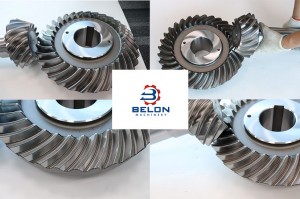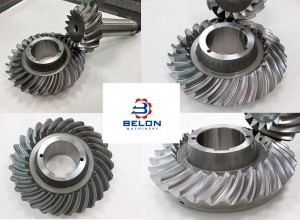Bevel gear reverse engineering
Reverse engineering a gear involves the process of analyzing an existing gear to understand its design, dimensions, and features in order to recreate or modify it.
Here are the steps to reverse engineer a gear:
Acquire the gear: Obtain the physical gear that you want to reverse engineer. This could be a purchased gear or an existing gear from a machine or device.
Document the gear: Take detailed measurements and document the gear’s physical characteristics. This includes measuring the diameter, number of teeth, tooth profile, pitch diameter, root diameter, and other relevant dimensions. You can use measuring tools such as calipers, micrometers, or specialized gear measurement equipment.
Determine gear specifications: Analyze the gear’s function and determine its specifications, such as gear type (e.g., spur, helical, bevel, etc.), module or pitch, pressure angle, gear ratio, and any other relevant information.
Analyze the tooth profile: If the gear has complex tooth profiles, consider using scanning techniques, such as a 3D scanner, to capture the exact shape of the teeth. Alternatively, you can use gear inspection machines to analyze the gear’s tooth profile.
Analyze the gear material and manufacturing process: Determine the material composition of the gear, such as steel, aluminum, or plastic. Also, analyze the manufacturing process used to create the gear, including any heat treatment or surface finishing processes.
Create a CAD model: Use computer-aided design (CAD) software to create a 3D model of the gear based on the measurements and analysis from the previous steps. Ensure that the CAD model accurately represents the dimensions, tooth profile, and other specifications of the original gear.
Validate the CAD model: Verify the accuracy of the CAD model by comparing it with the physical gear. Make any necessary adjustments to ensure the model matches the original gear.
Use the CAD model: With the validated CAD model, you can now utilize it for various purposes, such as manufacturing or modifying the gear, simulating its performance, or integrating it into other assemblies.
Reverse engineering a gear requires careful measurements, accurate documentation, and an understanding of gear design principles. It may also involve additional steps depending on the complexity and requirements of the gear being reverse engineered.
There are our finished reverse engineered bevel gears for your reference:
Post time: Oct-23-2023






